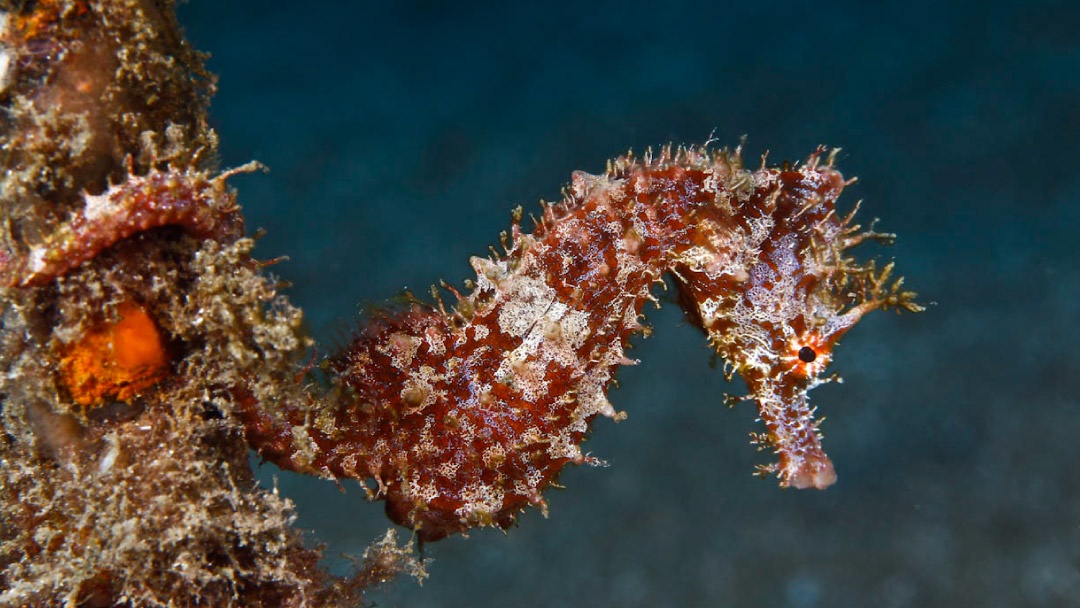 Seahorse | By Rogelio Herrera
Seahorse | By Rogelio Herrera
The European seahorse (Hippocampus guttulatus), a species already at risk due to overfishing and the destruction of its natural habitats, now faces and additional threat: the impacts of climate change. A recent study published in the scientific journal Diversify has revealed that rising water temperatures adversely affect the growth, reproduction, and survival of this iconic species.
As a species, the European seahorse is particularly vulnerable to narrow thermal limits. To understand how increasingly frequent and prolonged marine heatwaves might affects its well-being and chances of survival, researchers from the Centre of Marine Sciences (CCMar) at the University of Algarve in Portugal conducted a in-depth investigation. They exposed seahorses to controlled water temperatures of 16°C, 20°C, 24°C, and 28°C. The study revealed that at temperatures above 24°C, survival and reproductive activity drop significantly, with mortality rates reaching 62.5% in adults and 100% in juveniles at 28°C.
These findings underscore the fragility of the species in the face of global warming and highlight the urgent need for conservation measures to protect its populations across the Iberian coastline and other parts of the Mediterranean, where it is predominantly found. The study also noted that higher temperatures lead to an increase in oxygen consumption in seahorses, indicating significant metabolic stress that undermines their ability to grow, reproduce, and survive.
According to the researchers, seahorse population in the Ria Formosa lagoon in southern Portugal have already experienced sharp declines due to habitat degradation, including the loss of seagrass beds and algae meadows. This habitat loss exacerbates the impacts of climate change, leaving fewer areas for the species to seek refuge from extreme temperatures.
The optimal growth range for the European seahorse lies between 20ºC and 24ºC. However, with marine heatwaves projected to become more frequent, severe, and long-lasting, the risk to their survival increases dramatically. These results emphasise the importance of implementing targeted conservation strategies, such as establishing marine protected areas, continuously monitoring critical habitats, and tackling the global drivers of climate change.
The disappearance of the European seahorse would not only mean the loss of a symbolic species but also disrupt coastal ecosystems, as this animal serves as a vital indicator of the health of marine habitats. Protecting the seahorse is a critical step towards safeguarding marine biodiversity as a whole.


